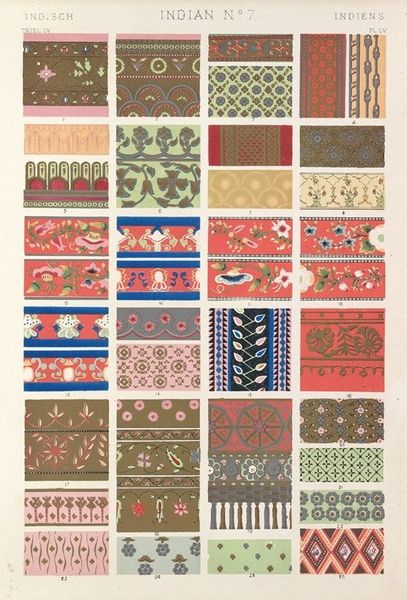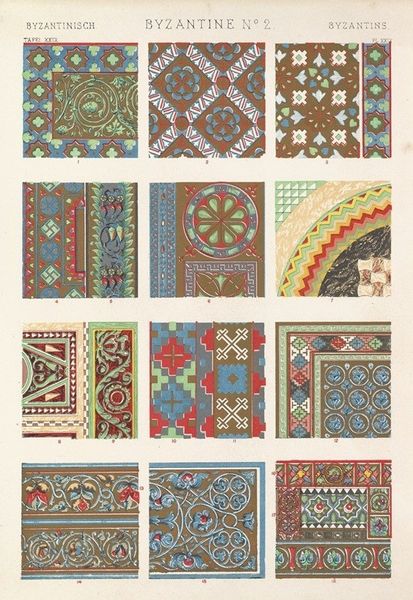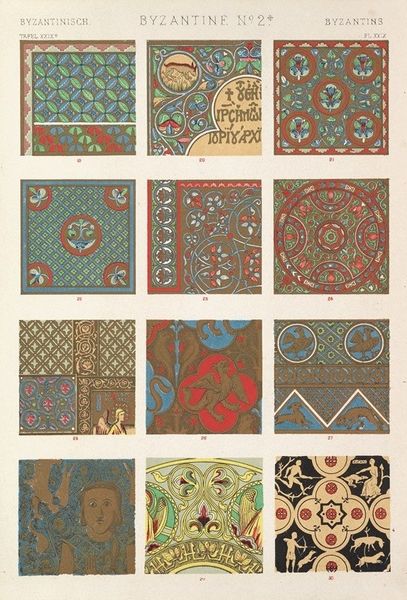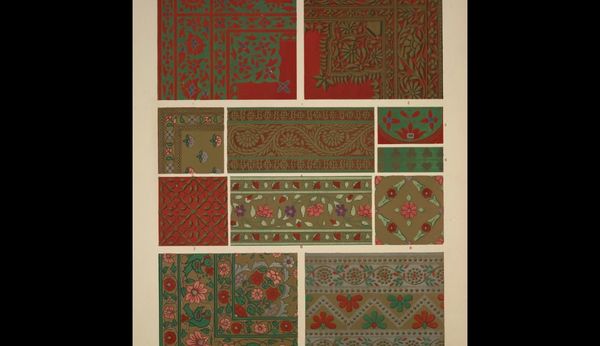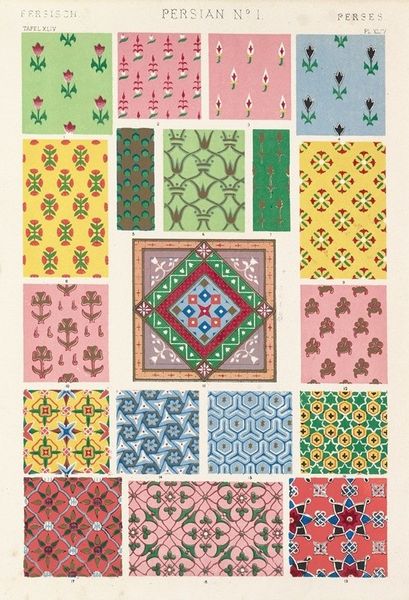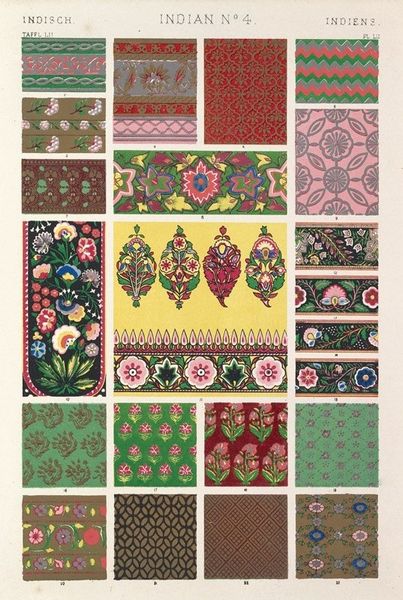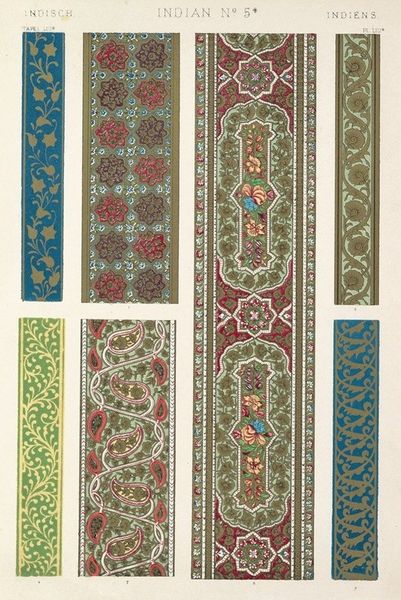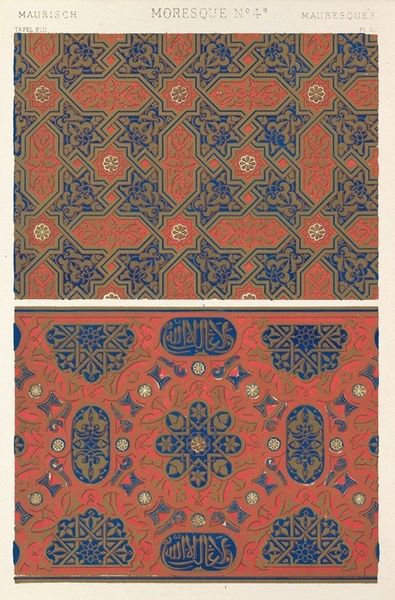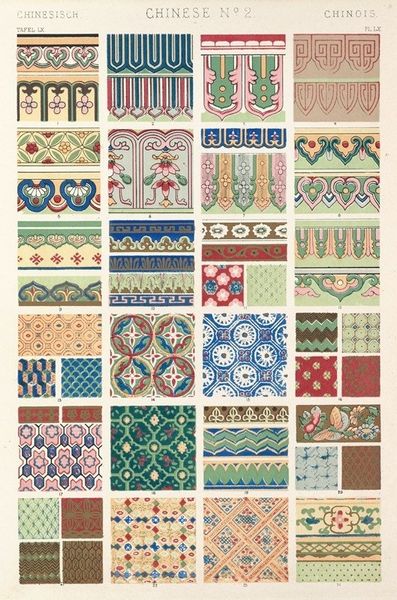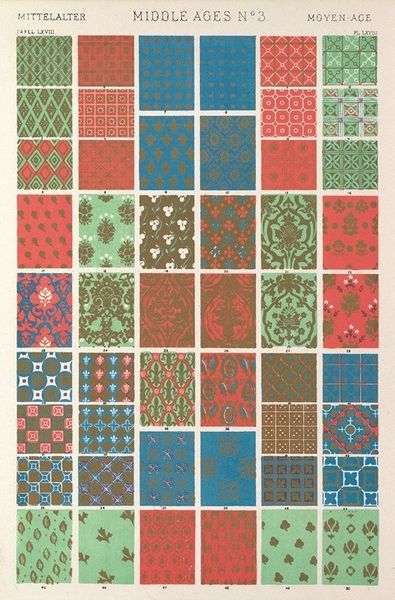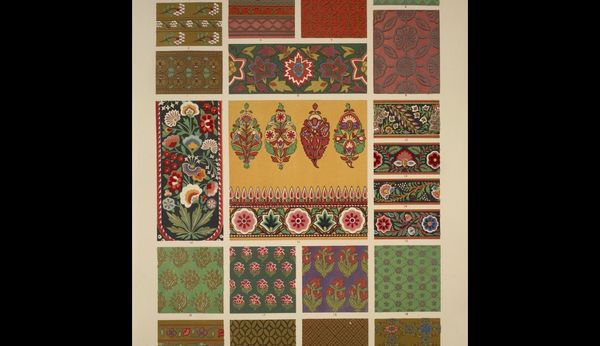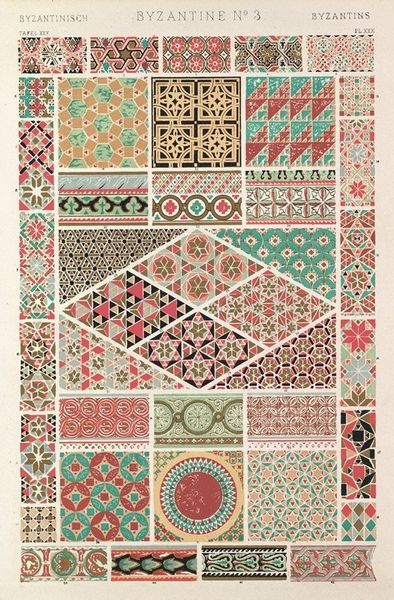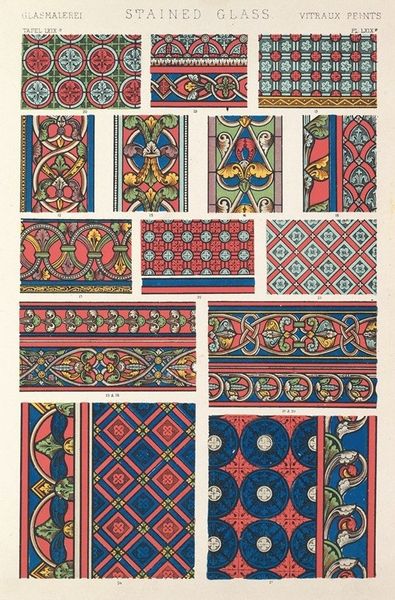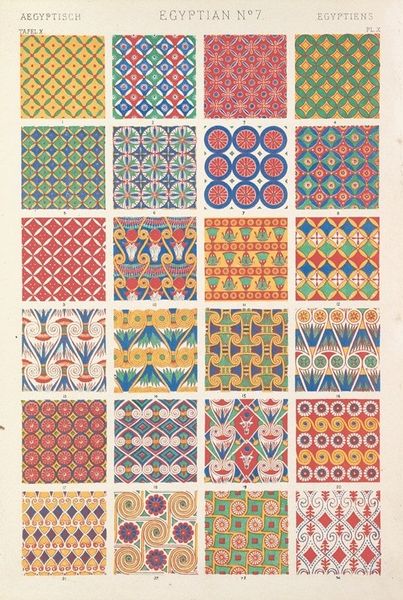
print, textile
# print
#
pattern
#
textile
#
pattern design
#
geometric
#
orientalism
#
textile design
#
decorative-art
Copyright: Public Domain: Artvee
Editor: Here we have "Indian No.2," a print by Owen Jones from 1856, showing various textile pattern designs. It's quite intricate and gives off an overall feeling of organized abundance. What do you see in this piece, particularly given its historical context? Curator: Well, looking at it, I'm immediately transported! Imagine the Victorians’ fascination with the "Orient." Owen Jones was hugely influential in decorative arts; his "Grammar of Ornament" was like the design bible. Here, you see how he interprets Indian motifs—lots of florals and geometric patterns. It's not exactly "Indian" in the purest sense; it's filtered through a European lens, don't you think? Almost a fantasy. Does any specific pattern stand out to you? Editor: Pattern 6, the one with the salmon-red flowers and the scrolling foliage... it's really captivating. Almost hypnotic. Is there any commentary implied about cultural appropriation? Curator: Absolutely, that’s a valid reading. We're more aware now of how cultures borrow and interpret. Back then, it was more about exoticism and a desire to elevate design, even if it meant romanticizing or misinterpreting a culture. Consider it a product of its time, a reflection of Victorian aesthetics meeting their idea of "India," filtered and idealized. Did Jones succeed in making these patterns accessible or did he "dilute" them? Editor: That’s a tricky question. It’s accessible, definitely. The designs are orderly, almost mathematical, appealing to a Victorian sense of precision, yet the designs feel flat. Almost as if all the mystery has been removed from its source. Curator: Right! I wonder if Jones ever realized the full implication of translation like this! I certainly never considered it this way! Thank you for shedding light on it.
Comments
No comments
Be the first to comment and join the conversation on the ultimate creative platform.
